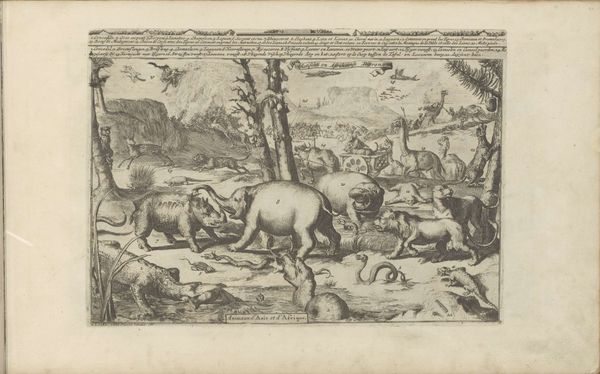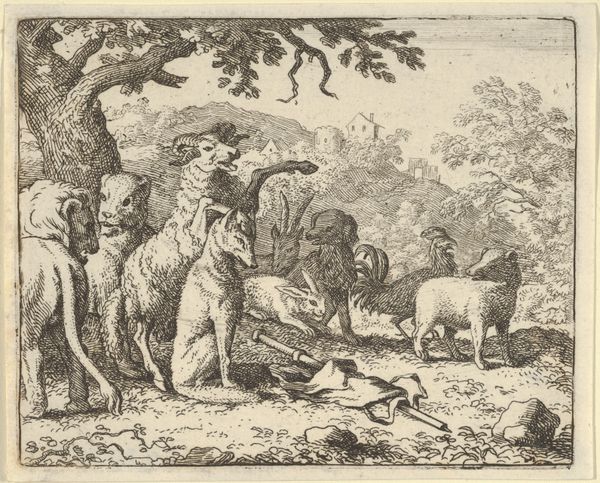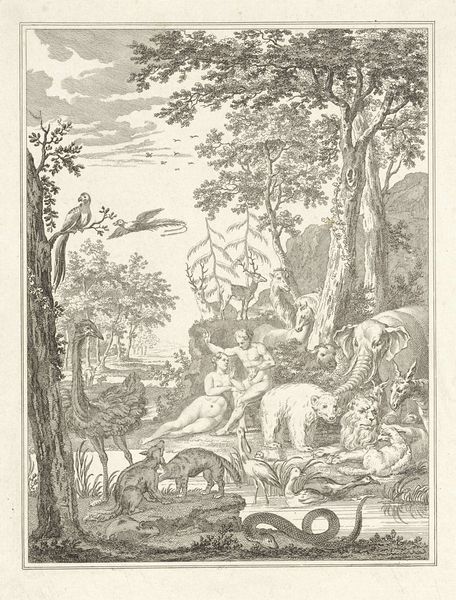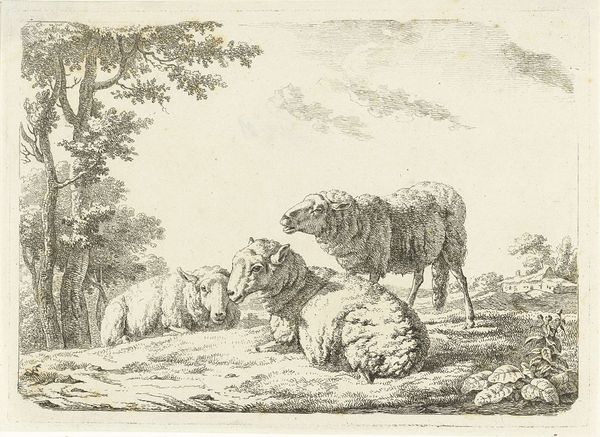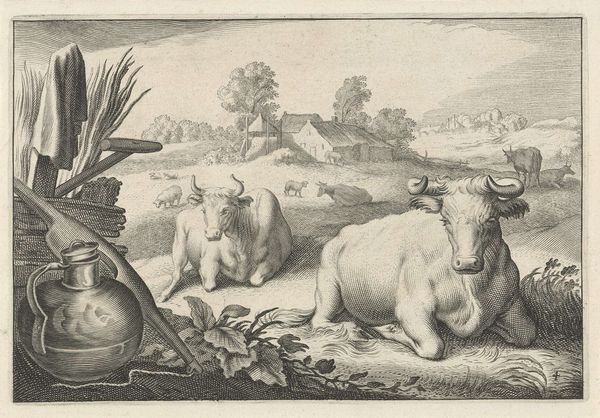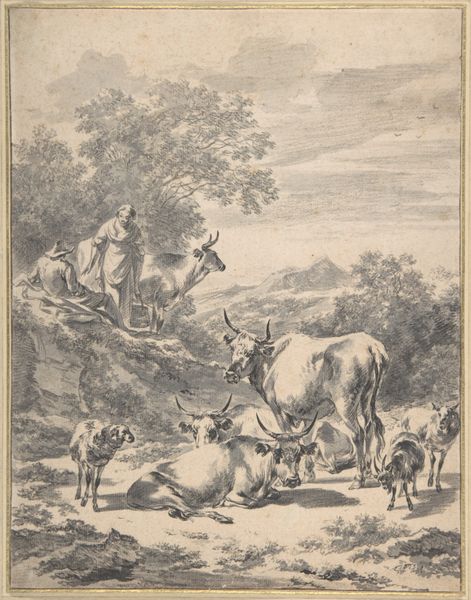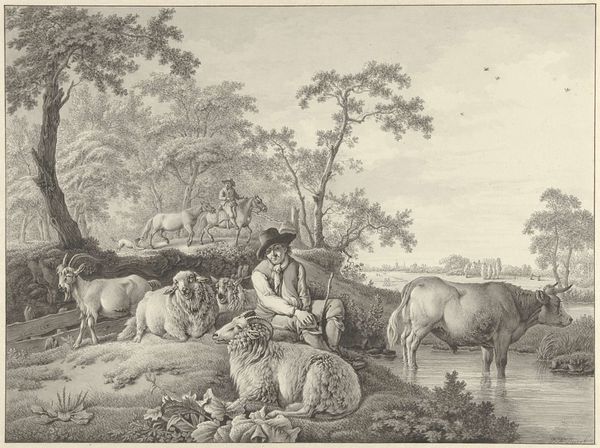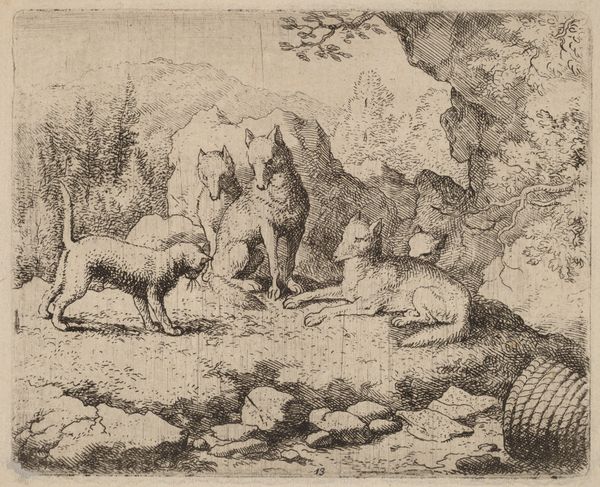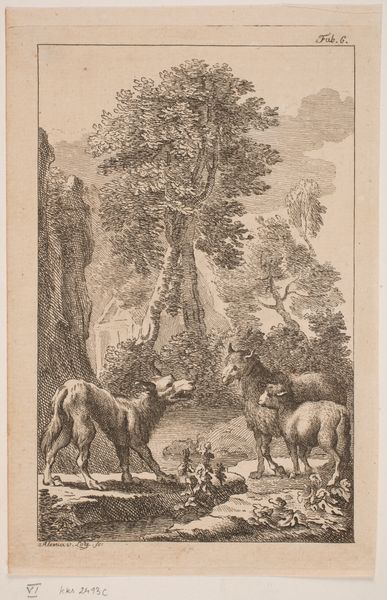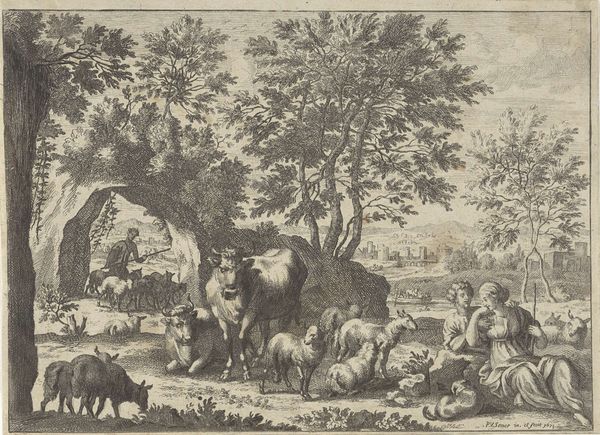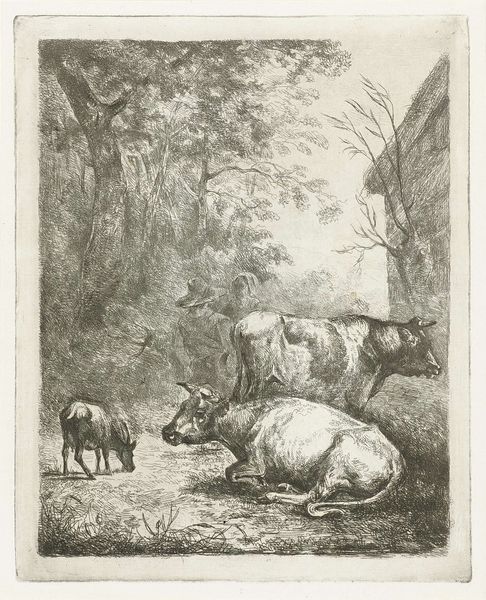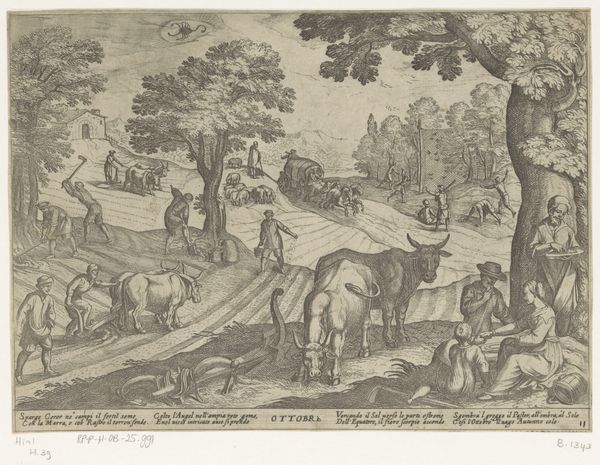
engraving
#
baroque
#
landscape
#
figuration
#
line
#
genre-painting
#
engraving
Dimensions: height 290 mm, width 172 mm
Copyright: Rijks Museum: Open Domain
Editor: This is *Landschap met Khoikhoi die jagen op olifanten* (Landscape with Khoikhoi Hunting Elephants), an engraving made in 1727 by Jan Caspar Philips. It depicts a group of elephants seemingly being driven into a pit. There’s a stark contrast between the animals and the landscape…it feels a bit… unsettling. How do you interpret this work? Curator: That feeling of unease is justified. While seemingly a straightforward depiction of a hunt, it's crucial to understand this image within its historical context. This engraving reinforces a colonial gaze, framing the Khoikhoi people through the lens of European superiority. Consider the term 'jagen' – 'hunting'. Who is framing this narrative? The engraving normalises and, perhaps even celebrates, the exploitation of both the land and its people. Editor: So it's not really *about* elephants? Curator: It’s about power. It uses the image of the hunt to illustrate a power dynamic. The ‘landscape’ itself becomes a stage for this demonstration of dominance. Look at the pit – it’s a visual metaphor for entrapment and subjugation, applied not only to the elephants but, symbolically, to the Khoikhoi. Does that shift how you see the 'contrast' you noticed earlier? Editor: Absolutely. I see the so-called 'hunting' as representing colonial oppression. The elephants, too, are victims of this worldview. It's unsettling because it reflects a system of exploitation. Curator: Precisely. And the ‘genre painting’ aspect normalises this violence as just another scene of everyday life in a far-off land, further obscuring the ethics of colonialism. This piece isn't simply a landscape; it's a potent visual statement about colonial ideology and the power dynamics inherent in representation itself. Editor: This makes me question what other underlying messages I've missed in similar artwork from this period. Curator: That is precisely the critical lens we must use. Always consider the artist’s social context and the role of art in perpetuating specific narratives.
Comments
No comments
Be the first to comment and join the conversation on the ultimate creative platform.
